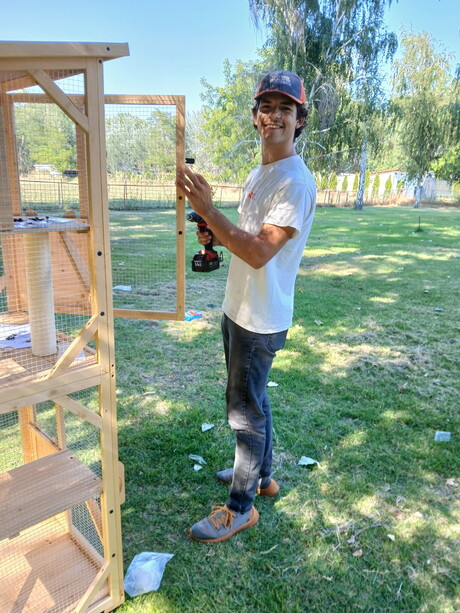The creative minds of this year’s computer numerically controlled prototyping class designed and constructed their own unique furniture for children. They learned how to use complex machinery and software to take their ideas from quick-sketch design to physical products that could support child learning and play.
Every fall quarter, Jefre Humbert, product design instructor, teaches students how to use the CNC wood carving table to create various structures and objects out of plywood with real-world applications. Humbert believes that the project-based style of the class is an important way for students to gain hands-on skills that will serve them well in the workplace.
The fall quarter 2024 project brief asked students to build wooden furniture for children between the ages of 3 and 5. The first step required research — finding out what kids are interested in, how little they are, what any safety concerns may be and numerous other variables. The creative furniture designs that students came up with included a boat that could rock, a slide, a train and more. Some of these projects were created with specific kids in mind who were gifted the finished pieces. Others were designed more broadly — plans are being made to donate those projects to local preschools.
One of this year’s students, Brenna Sherill, junior product design major, built a table resembling a train engine. She said it was designed for a 2-year-old that she knows because “he loves trains so I thought it would be fun to build it for him.”
Samuel Arriaza, senior product design major, built a set of two chairs and a desk where the backrests of both chairs resembled bunny ears and the desk resembled a carrot. The backrests for each chair presented the most difficulty, needing to balance both functionality and aesthetics. Arriaza said, "They had me stumped for a week or so, but eventually it ended up working out!”
The design brief for these projects is different every year. When choosing a theme, Humbert said, “I think about it all summer! I always want it to be fun and engaging for the students and I want to encourage their curiosity and problem-solving.” Though these projects may not produce the same final products, their purpose remains the same: to equip students with the ability to analyze real needs in the world around them and create thoughtfully customized solutions.
The Maker Space cart project, a previous project, required students to go out into the community to find local teachers or librarians who needed a mobile storage cart. Each cart was designed to the unique specifications of the individual who received the completed projects as a gift. In another year, students were tasked with creating elementary desks utilizing only a single sheet of plywood. The idea was to create a functional and efficient design that could be used in places with limited access to materials.
These projects successfully pair education with experience and offer a unique opportunity for students to add a new, professional piece to their portfolio. The CNC prototyping class, like many other WWU product design classes, maintains a smaller class size that allows for more one-on-one interaction between student and professor. Throughout each step of the design and production process, Humbert is there to offer guidance and constructive critique.
By the end of the quarter, students walk away with a strong understanding of how to use the CNC machine and the Computer-aided Manufacturing software to help them create a real-world impact.
To learn more about previous projects and learning product design at WWU, visit wallawalla.edu/product-design.







